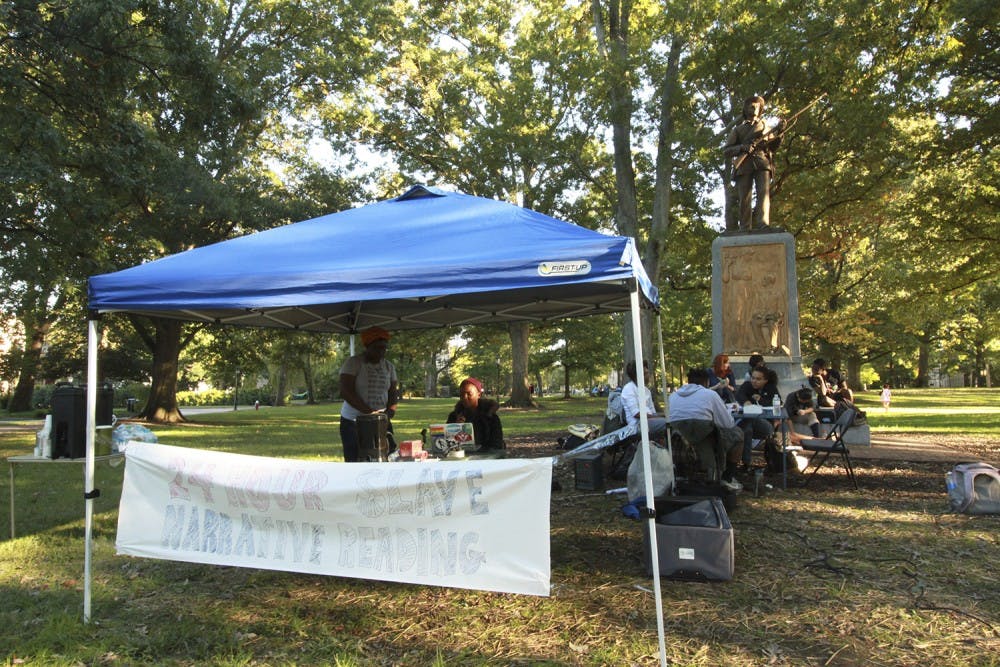From midnight Saturday night to midnight Sunday night, the Real Silent Sam Coalition held a continuous reading of slave narratives in front of the Silent Sam monument, which memorializes UNC Confederate soldiers. The narratives included stories of slaves’ escapes from Southern plantations, the perils of the Middle Passage and mothers choosing to take their children’s lives instead of letting them be enslaved.
Senior June Beshea, an organizer of the vigil and member of the RSSC, said they decided to hold the vigil in front of Silent Sam because the monument represents white supremacy.
“I think that if you really get into what it memorializes, like if you really get into the fact that it’s slaves, about slave violence, violence against black women and black people, and you make those voices known, nobody can be like ‘no, that’s not what it stands for,’ because you’re right there telling them,” Beshea said.
Senior Kescia Hall, a RSSC member and organizer of the vigil, said the point of the vigil was not necessarily to have passersby hear the readings.
“It’s done as a space of healing for those involved and not necessarily for those to observe or watch,” Hall said. “It’s lifting up the voices of those that Silent Sam would have chose to kill.”
Beshea said they hoped people would think about which people are allowed to be memorialized on campus.
“It’s not the voices that we’re going to be speaking,” Beshea said. “It’s definitely the Confederate side of it, it’s the racist people, the sexist people. Because they have money, they’re given these high positions on campus where we have to say their name all the time, we have to walk into their building or we have to walk by their statue.”
“I think (people) should take from it that we’re going to try for at least 24 hours to get the other side of that said and vocalized.”




